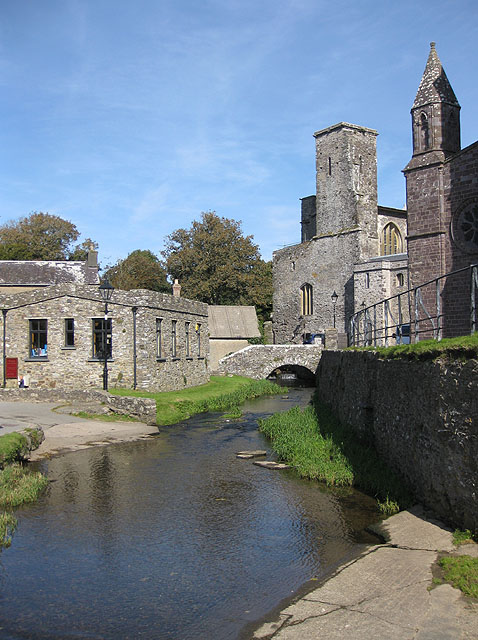|
Porthclais
Porthclais (also known as Porth Clais) is a small sheltered inlet harbour near St Davids, Pembrokeshire, Wales, in the community of St Davids and the Cathedral Close. History Porthclais harbour was built in the 12th century, importing coal and timber. The entire harbour is within the St David's Peninsula Site of Special Scientific Interest. Porthclais is still used as a small port by local fishermen and recreational sailors. The largely intact old harbour wall may have been built by the Romans, and the harbour was mentioned in the mediaeval Mabinogion. The earliest recorded date of trade through the port is 1385. The harbour dries out at low tide and is a good launching spot for small boats, dive craft and kayaks who are setting out to explore St Bride's Bay. Porthclais harbour has some of the best preserved remains of stone Lime kilns in Pembrokeshire. Harbour authority Porthclais Harbour Authority Limited provides harbour services; the harbour can accommodate around 50 small b ... [...More Info...] [...Related Items...] OR: [Wikipedia] [Google] [Baidu] |
St Davids
St Davids or St David's ( cy, Tyddewi, , "David's house”) is a city and a community (named St Davids and the Cathedral Close) with a cathedral in Pembrokeshire, Wales, lying on the River Alun. It is the resting place of Saint David, Wales's patron saint, and named after him. St Davids is the United Kingdom's smallest city in population (just over 1,600 in 2011) and urban area (the smallest city by local authority boundary area being the City of London). St Davids was given city status in the 12th century. This does not derive automatically from criteria, but in England and Wales it was traditionally given to cathedral towns under practices laid down in the early 1540s, when Henry VIII founded dioceses. City status was lost in 1886, but restored in 1994 at the request of Queen Elizabeth II. History Early history Although the surrounding landscape is home to a number of Palaeolithic, Bronze Age and Iron Age sites, archaeological evidence suggests that Pembrokeshire wa ... [...More Info...] [...Related Items...] OR: [Wikipedia] [Google] [Baidu] |
Lime Kiln
A lime kiln is a kiln used for the calcination of limestone (calcium carbonate) to produce the form of lime (material), lime called quicklime (calcium oxide). The chemical equation for this chemical reaction, reaction is :Calcium carbonate, CaCO3 + heat → Calcium oxide, CaO + Carbon dioxide, CO2 This reaction can take place at anywhere above 840 °C (1544 °F), but is generally considered to occur at 900 °C(1655 °F) (at which temperature the partial pressure of CO2 is 1 atmosphere (unit), atmosphere), but a temperature around 1000 °C (1832 °F) (at which temperature the partial pressure of CO2 is 3.8 atmospheres) is usually used to make the reaction proceed quickly.Parkes, G.D. and Mellor, J.W. (1939). ''Mellor's Modern Inorganic Chemistry'' London: Longmans, Green and Co. Excessive temperature is avoided because it produces unreactive, "dead-burned" lime. Slaked lime (calcium hydroxide) can be formed by mixing quicklime with water. Early li ... [...More Info...] [...Related Items...] OR: [Wikipedia] [Google] [Baidu] |
Porth Clais Harbour
Porth ( cy, Y Porth) is a town and a Community (Wales), community in the county borough of Rhondda Cynon Taf, within the Historic counties of Wales, historic county boundaries of Glamorgan, Wales. Lying in the Rhondda Valley, it is regarded as the gateway connecting the Rhondda Fawr and Rhondda Fach valleys due to both valleys meeting at Porth. The Welsh word "porth" means "gate". Porth is a predominantly English-speaking community. Neighbouring villages include Trealaw, Trebanog, Trehafod and Ynyshir. History Early history During prehistoric times the area now known as Porth was an uninhabited wooded area. Although there is evidence of settlements in the upper reaches of the valley, only cairns used as way-markers have been discovered on the higher points in the Porth area. During the medieval period the area came under the commote of Glynrhondda within the cantref of Penychen, though the area remained uninhabited. Although there were no permanent buildings of note at this time ... [...More Info...] [...Related Items...] OR: [Wikipedia] [Google] [Baidu] |


